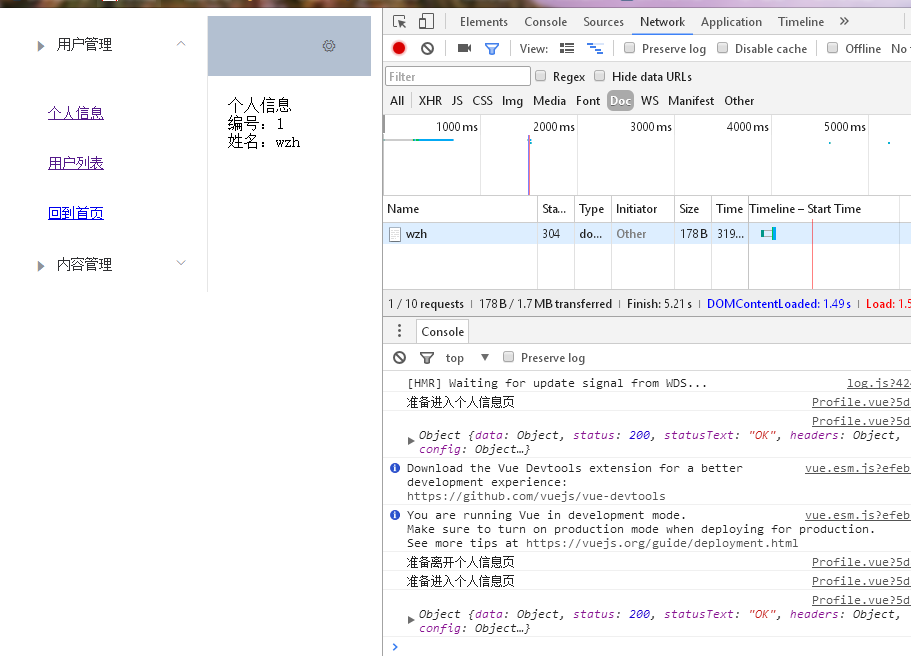1.什么是路由钩子
beforeRouteEnter:在进入路由前执行beforeRouteLeave:在离开路由前执行
export default { props: ['id'], name: "UserProfile", beforeRouteEnter: (to, from, next) => { console.log("准备进入个人信息页"); next(); }, beforeRouteLeave: (to, from, next) => { console.log("准备离开个人信息页"); next(); } }
参数说明:
- to:路由将要跳转的路径信息
- from:路径跳转前的路径信息
-
next:路由的控制参数
- next() 跳入下一个页面
- next('/path') 改变路由的跳转方向,使其跳到另一个路由
- next(false) 返回原来的页面
- next((vm)=>{}) 仅在 beforeRouteEnter 中可用,vm 是组件实例
2.导入
注:npm不行就用cnpm,cnpm不行就用npm
npm install --save axios vue-axios
cnpm install
3.main.js中配置
1 // 安装异步通信工具 2 import axios from 'axios' 3 import VueAxios from 'vue-axios' 4 5 Vue.use(VueAxios, axios);
4.准备数据
在static文件夹中建立mock文件夹,在建立一个data.json文件
1 { 2 "name": "第一个Axios程序", 3 "url": "https://www.cnblogs.com/zhihaospace/p/12078861.html", 4 "page": 1, 5 "isNonProfit": true, 6 "address": { 7 "street": "科大南区", 8 "city": "安徽", 9 "country": "中国" 10 }, 11 "links": [ 12 { 13 "name": "海恋天", 14 "url": "https://www.cnblogs.com/zhihaospace/" 15 }, 16 { 17 "name": "Vue的组件", 18 "url": "https://www.cnblogs.com/zhihaospace/p/12078835.html" 19 }, 20 { 21 "name": "Vue的双向绑定", 22 "url": "https://www.cnblogs.com/zhihaospace/p/12078708.html" 23 } 24 ] 25 }
5.修改Profile.vue文件
1 <template> 2 <div> 3 <div>个人信息</div> 4 编号:{{$route.params.userId}} 5 <br> 6 姓名:{{$route.params.userName}} 7 </div> 8 9 </template> 10 11 <script> 12 13 export default { 14 name: "UserProfile", 15 beforeRouteEnter: (to, from, next) => { 16 console.log("准备进入个人信息页"); 17 // 注意,一定要在 next 中请求,因为该方法调用时 Vue 实例还没有创建,此时无法获取到 this 对象,在这里使用官方提供的回调函数拿到当前实例 18 next(vm => { 19 vm.getData(); 20 }); 21 }, 22 beforeRouteLeave: (to, from, next) => { 23 console.log("准备离开个人信息页"); 24 next(); 25 }, 26 methods: { 27 getData: function () { 28 this.axios({ 29 method: 'get', 30 url: 'http://localhost:8080/static/mock/data.json' 31 }).then(function (repos) { 32 console.log(repos); 33 }).catch(function (error) { 34 console.log(error); 35 }); 36 } 37 } 38 } 39 </script> 40 41 42 <style scoped> 43 44 </style>
展示:
